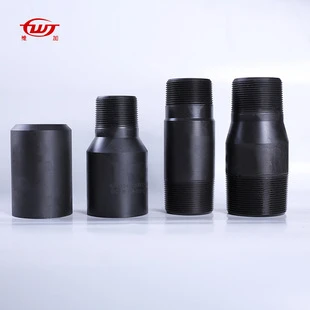- Afrikaans
- Albanian
- Amharic
- Arabic
- Armenian
- Azerbaijani
- Basque
- Belarusian
- Bengali
- Bosnian
- Bulgarian
- Catalan
- Cebuano
- Corsican
- Croatian
- Czech
- Danish
- Dutch
- English
- Esperanto
- Estonian
- Finnish
- French
- Frisian
- Galician
- Georgian
- German
- Greek
- Gujarati
- Haitian Creole
- hausa
- hawaiian
- Hebrew
- Hindi
- Miao
- Hungarian
- Icelandic
- igbo
- Indonesian
- irish
- Italian
- Japanese
- Javanese
- Kannada
- kazakh
- Khmer
- Rwandese
- Korean
- Kurdish
- Kyrgyz
- Lao
- Latin
- Latvian
- Lithuanian
- Luxembourgish
- Macedonian
- Malgashi
- Malay
- Malayalam
- Maltese
- Maori
- Marathi
- Mongolian
- Myanmar
- Nepali
- Norwegian
- Norwegian
- Occitan
- Pashto
- Persian
- Polish
- Portuguese
- Punjabi
- Romanian
- Russian
- Samoan
- Scottish Gaelic
- Serbian
- Sesotho
- Shona
- Sindhi
- Sinhala
- Slovak
- Slovenian
- Somali
- Spanish
- Sundanese
- Swahili
- Swedish
- Tagalog
- Tajik
- Tamil
- Tatar
- Telugu
- Thai
- Turkish
- Turkmen
- Ukrainian
- Urdu
- Uighur
- Uzbek
- Vietnamese
- Welsh
- Bantu
- Yiddish
- Yoruba
- Zulu
Stainless Steel Coupling for Enhanced Durability and Performance in Various Applications
Understanding Stainless Steel Couplings and Their Importance in Various Applications
Stainless steel couplings are essential components in a wide range of industrial applications. These fittings play a critical role in connecting pipes, tubes, and other equipment, ensuring the efficient and safe transfer of fluids and gases. In this article, we will explore the properties, types, and advantages of stainless steel couplings, with a specific focus on the 3-inch and 4-inch varieties.
Properties of Stainless Steel Couplings
Stainless steel is a corrosion-resistant alloy that contains at least 10.5% chromium. This element forms a protective oxide layer on the surface of the steel, making it highly resistant to rust and corrosion. This characteristic is particularly important for applications that involve exposure to harsh environments, such as chemicals, moisture, and extreme temperatures.
The two most common grades of stainless steel used for couplings are 304 and 316. The 304 grade is widely favored for its excellent strength, ductility, and weldability, while the 316 grade offers superior resistance to chlorides and is ideal for marine and chemical applications. Both grades are capable of maintaining their structural integrity under high pressure and temperature, which makes them suitable for demanding environments.
Types of Stainless Steel Couplings
Stainless steel couplings come in various shapes and sizes, tailored to meet specific needs in different industries. Some of the most common types include
1. Coupling Nuts These are hexagonal nuts used to connect threaded rods or pipes. They provide a strong connection and are often used in structural applications.
2. Pipe Couplings These couplings are primarily used to connect two pipe ends. They can be either threaded or slip-on, depending on the installation requirements.
3. Flexible Couplings Designed to accommodate misalignment between connected pipes, flexible couplings allow for movement and help reduce stress on the pipeline.
4. Compression Couplings These rely on a compression fitting that is tightened around the pipe, creating a tight seal. They are commonly used to join pipes of different sizes or materials.
5. Rigid Couplings These do not allow for any movement or misalignment, providing a strong, permanent connection. They are typically used in systems where alignment is critical.
In the context of 3-inch and 4-inch couplings, these sizes are often utilized in plumbing, HVAC systems, and industrial fluid transfer applications.
stainless steel coupling 3 4

Advantages of Using Stainless Steel Couplings
1. Corrosion Resistance As mentioned, stainless steel's inherent resistance to rusting and corrosion makes it the ideal choice for both indoor and outdoor applications.
3. Ease of Installation Many stainless steel couplings are designed for quick and easy installation, reducing labor costs and downtime during repairs or upgrades.
4. Versatility These couplings are compatible with various piping materials, enhancing their utility in mixed-material applications.
5. Aesthetic Appeal Stainless steel has a modern and polished look, which can be advantageous in exposed applications, such as in architectural designs or visible plumbing.
Applications of Stainless Steel Couplings
Stainless steel couplings are used in a variety of industries, including
- Plumbing They are essential in residential and commercial plumbing for connecting pipes and ensuring leak-free systems. - Automotive In vehicles, stainless steel couplings are used in fuel lines, exhaust systems, and cooling systems, where they provide reliable connections under extreme conditions.
- Marine The marine industry relies on stainless steel couplings for their resistance to saltwater corrosion, used in boat plumbing and water sports equipment.
- Food and Beverage Stainless steel is the material of choice for food processing and brewing equipment due to its sanitary properties.
Conclusion
In conclusion, stainless steel couplings, particularly the 3-inch and 4-inch varieties, play a vital role in ensuring safe and efficient operations across multiple sectors. Their unique properties, various types, and numerous advantages make them invaluable in modern engineering and construction. As industries evolve and demand more resilient components, the reliance on stainless steel couplings will undoubtedly continue to grow, affirming their importance in our daily lives. Whether in plumbing, automotive, or industrial applications, these couplings are fundamental in connecting systems and safeguarding functionality.
-
Tubing Pup Joints: Essential Components for Oil and Gas OperationsNewsJul.10,2025
-
Pup Joints: Essential Components for Reliable Drilling OperationsNewsJul.10,2025
-
Pipe Couplings: Connecting Your World EfficientlyNewsJul.10,2025
-
Mastering Oilfield Operations with Quality Tubing and CasingNewsJul.10,2025
-
High-Quality Casing Couplings for Every NeedNewsJul.10,2025
-
Boost Your Drilling Efficiency with Premium Crossover Tools & Seating NipplesNewsJul.10,2025







